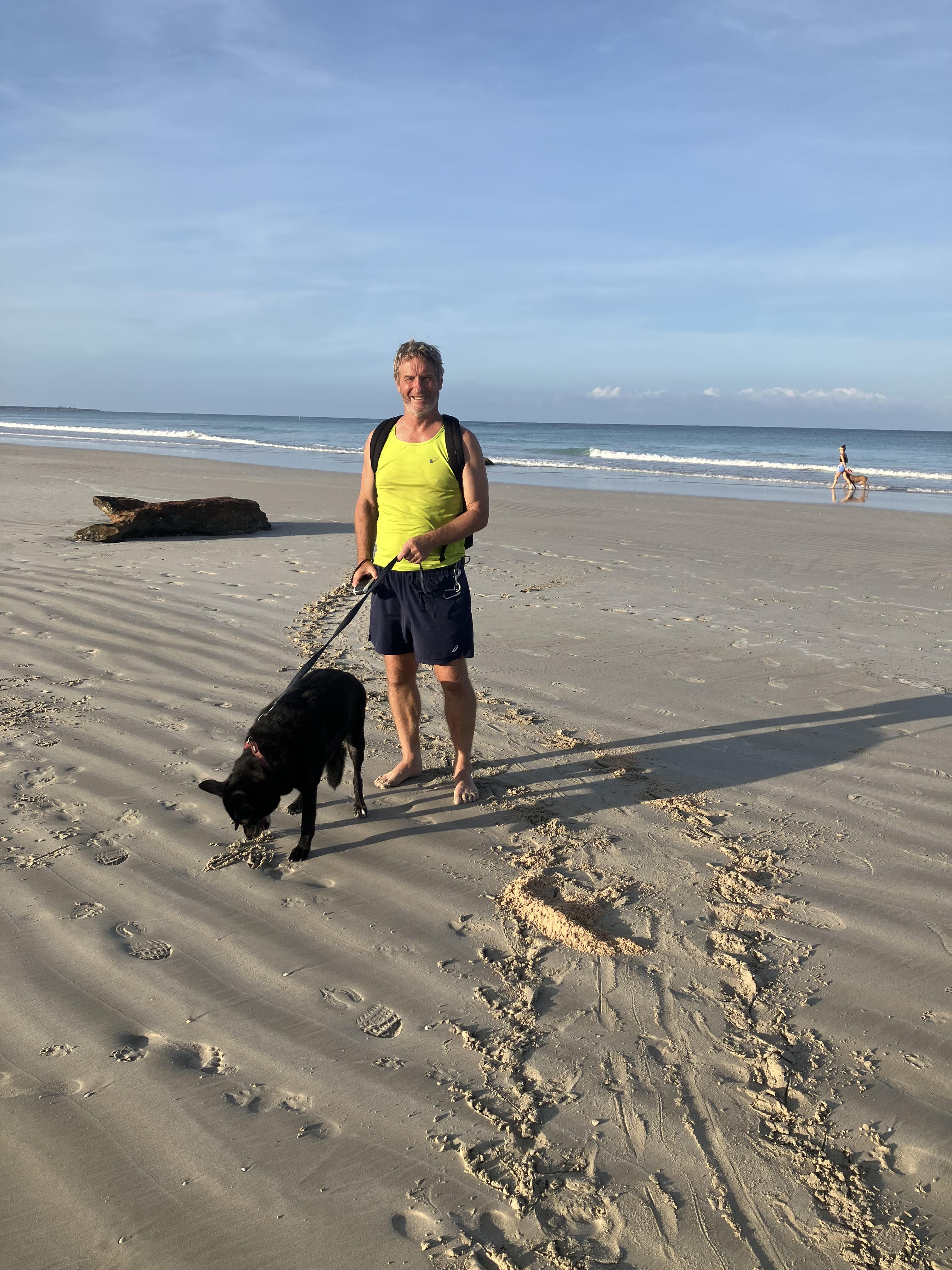Turtle Tracker
BROOME’S TURTLE TRACKER - Bruce Pennicuik
To say Bruce is passionate about Broome’s turtles is an understatement.
In 2012/13 he began volunteering and training with what is now known as the Cable Beach Community Monitoring Program, run by WA Dept Biodiversity, Conservation and Attractions (DBCA) - Parks and Wildlife Service when each morning, they record the nesting of turtles over three sectors, from 2 km south of the surf club to 4 km north (from Nov - Mar).
Last season, they reduced the distance and time-frame, and being conscious of keeping the data accurate, Bruce continues to monitor the original northern sectors.
“I start logging on my GPS on 1 October - the start of the nesting season - recording the nesting dates, locations, false crawls, hatchings and identifying the species until March, or when the last of the nests have hatched. I only share my data with those who ask for it. Lately, it was requested by YAWURU to support their quest for an extended closure of Cable Beach, from 31 January to 28 February. My data showed that there were 20% more hatches in that period - they were successful.”
Although a volunteer, Bruce tries to do six days a week. He can be found on the beach at any time but usually goes out about 2:30am with a two-hour turnaround unless he sees something, then he can be out a lot longer. “Quite often you don’t see any activity. It’s rare to see a turtle laying and others hatching in the one night, but I have seen this. Also, I have been lucky to see a turtle laying and then see that nest hatch out later.”
“Normally, most nests are in the intertidal zone, however the interesting thing this season is that they’re nearly all up in the dune vegetation which could be an indication of a big wet.”
“If you want to see turtles nesting, the best time is probably within 1/2 hour of the high-tide turning. They still come up on a low-tide but they tend to do it at night when it’s cooler and they probably feel safer. A successful nest is indicated by the tracks, some escarpment from the primary pit and a clear secondary pit.”
“Sometimes the tracks can be a ‘false crawl’ where they just turn around and go back. You can sometimes tell this by the ‘tail-drag’ although that can be deceptive too. You have to work out what she’s had to do because if she’s come in when the tides way out and she’s had to come a long way, she might have two or three attempts, then dig the nest and lay the eggs, cover it all over and then head back. If she’s really tired, she might leave a ‘tail drag’. The understanding is, if they have a couple of false crawls they can shed the eggs at sea.”
“Hatchlings happen anytime. You could assume it’s related to the moon, but they just come out when they are ready. From my observations plenty erupt out just after dawn, but I’ve also seen them come out in the middle of the night.”
Things to remember:
• Always use a red light - a bright light disorientates them.
• Stay quiet and try to stay behind the turtle.
• Watch your dogs on the beach during nesting time.
• Let the hatchlings find their way to the water.
• If you see one that is completely exhausted or headed in the wrong direction, contact Native Animal Rescue - 0407 773 258 - who will collect and nurse it, then return it.
• Use a towel or gloves if you need to handle it - this protects the turtle, also you from infection.
Date: 27th January 2024

